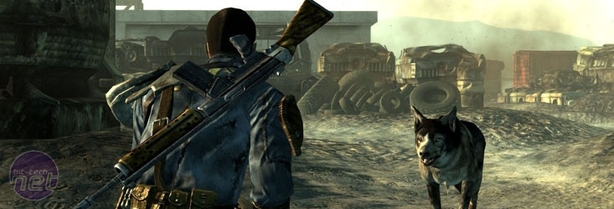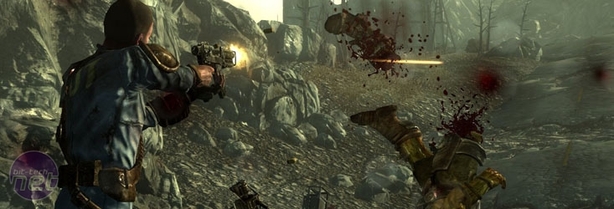Top Five Console Games of the Year 2008
January 3, 2009 | 09:06
Companies: #bit-tech #christmas #games

Two – Fallout 3
Publisher: Bethesda SoftworksUK Price: £35.99 Incl. VAT
US Price: $58.99 Excl. Tax
Full Review Here
Fallout 3 is Bethesda’s second effort to design an RPG for consoles first and foremost (since Morrowind was mainly for PCs) and it improves on Oblivion in pretty much every single way.
Fallout 3 is bigger, badder and just plain better than pretty much any console RPG that’s gone before. That’s something almost everyone can agree on.
Using the same first person perspective (and engine) as Oblivion, Fallout 3 shifts things away from the medieval era to Interplay’s post-apocalyptic Fallout universe. There’s no swords and sorcery in this 50’s view of a nuclear wasteland – but there’s an awful lot of science and super-mutants.
The game begins with the player's birth, literally allowing you to come into the world and decide your genetic traits and appearance. You meet your father and say goodbye to your mother as she dies of a tragic complication resulting for your birth. Years pass in moments and you’re familiarised with the world around you; the world of Vault 101.
Buried deep beneath the Earth and encased in a sarcophagus of steel and lead, Vault 101 is a safe haven for your fractured family and it's here that you spend your formative years under the watchful eyes of your father, the Vault Doctor. Love him or hate him, he’s your father and you depend on him. So it’s only natural that you go looking for him when he claims the honour of being the first person to leave the Vault since the bombs first fell.
Once you’re outside you find that the world above isn’t exactly as hospitable as you might have hoped. There are giant radscorpions that roam the wracked remains of the earth and twisted, flayed humans driven crazy by the radiation. Even the last few bastions of society are dangerous and lawless places, like Rivet City where the wind whines through the twisted metal of the aircraft carrier the town is built on.
Unlike the Bethesda’s first real console effort Fallout 3 isn’t just all empty space and identi-kit caverns, but a much smaller and more concentrated world built out of more interesting and unique locations. The ravaged remains of Washington DC provide plenty of derelict buildings for the player to explore, while the surrounding environs let you wander more freely through the wasteland, poking your nose into small villages and metro stations.
Even the little kinks in Bethesda’s Elder Scrolls RPG system have been ironed out too, replaced with Interplay’s much more approachable and solid Special stat-system. Players no longer just hold an elastic band around the thumbstick for four hours, making the character run on the spot to upgrade the athletics skill. Instead, you eke out every shred of XP you can find and then choose a special perk. Much more reward, if you ask us.
Bethesda hasn’t been timid when it comes to making changes to the Fallout series either though, revamping the turn-based combat of the first game into a VATS-based slow motion gorefest. To hardcore Fallout fans that might not sound all that amazing, but in action it’s fantastic and gives the game a classic, tactical feel if you want it.
By listening to gamer feedback after Oblivion, borrowing what they need from those who can help and then improving where they have too, Bethesda has show that it can outperform even itself and create the best FPS RPG to grace the current generation of consoles.

MSI MPG Velox 100R Chassis Review
October 14 2021 | 15:04











Want to comment? Please log in.